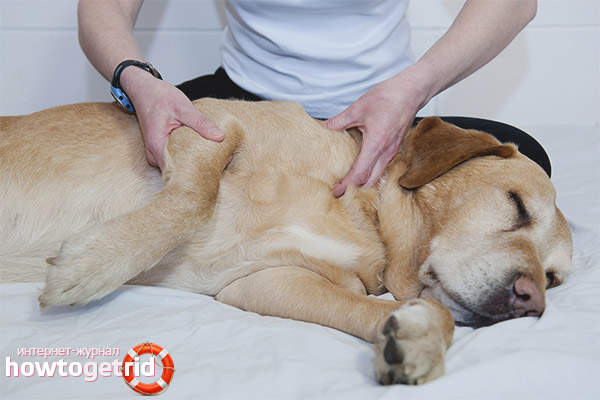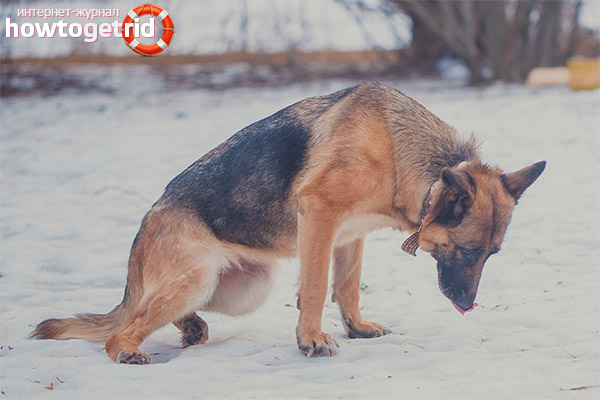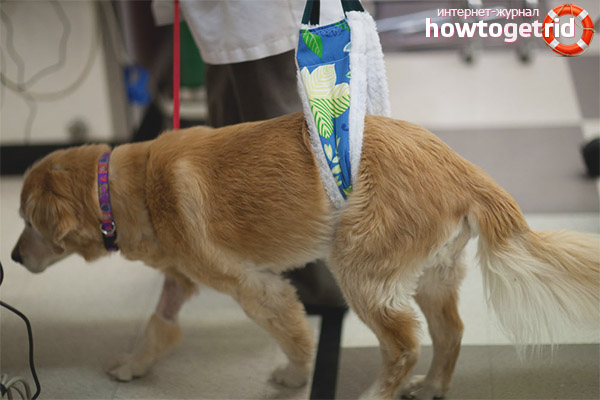The content of the article
For any dog, one of the most enjoyable and joyful moments is a long walk in the fresh air. However, sometimes this event becomes difficult and painful for the pet. This happens, as a rule, due to pain in the joints of the animal. In this case, it is extremely important to understand in time that the pet has arthritis in order to cure the disease as soon as possible. So how do you recognize arthritis in an animal, and what measures should be taken?
What is arthritis and why does it appear?
Arthritis is a pathological change that occurs predominantly in the joints. This disease provokes the appearance of quite severe pain of a chronic nature in the animal, which significantly worsens the quality of its life. As a rule, dogs with arthritis do not move much, they lie most of the time, and they do not like long walks.
There are several reasons for the development of arthritis in an animal:
- Pet's young age. Most often, arthritis is observed in older dogs. This is due primarily to the fact that with age, the joints of dogs lose their former elasticity.
- The presence of a genetic predisposition to this disease.
- The presence of excess weight. Large body weight greatly increases the load on the joints, as a result of which they wear out much faster.
- Mechanical damage and injury. Arthritis can begin to develop due to bruising, dislocation, sprain, or excessive stress.
- Infectious and viral lesions of the joints.
It is also worth considering that large breeds of dogs have the greatest predisposition to joint disease. External conditions can accelerate the progress of arthritis, for example, the animal’s frequent movement on slippery surfaces. The greatest impact on the development of the disease is exerted by great weight and age.
Types of Dog Arthritis
Dog arthritis can occur in several different forms. The variety depends, first of all, on the cause of the appearance of the disease. Today, the following forms of arthritis in dogs are distinguished:
- Traumatic arthritis. The root cause of the development of this disease is various kinds of mechanical damage. These include severe bruises, sprains, dislocations, fractures, etc. The fact is that such injuries lead to a significant increase in the load on a healthy joint. Due to metabolic disorders in the body, cartilage tissue gradually begins to break down, and the joint part becomes inflamed.
- Functional Arthritis This form of the disease is somewhat similar to the first. The only difference is that in this case arthritis develops due to excessive load on the joint. Such a disease can be observed in animals that often undergo prolonged training.
- Metabolic arthritis. Also, this type of disease is often called dystrophic. Such arthritis develops due to metabolic disorders in the body. For example, inflammation of the joints can occur due to pyrophosphate. In this case, crystals of calcium phosphate appear in the synovial fluid, injuring the joint tissue. Inflammation can also occur with hemochromatosis - too much iron in the body. In addition, rickets can become a cause of arthritis - a disease in which the exchange of phosphorus and calcium is disrupted. This violation leads to softening of bone tissue and, as a consequence, a change in the shape of the bones.This process is traditionally accompanied by inflammation in the joints.
- Purulent arthritis. This form of the disease develops after the appearance of injuries in the periarticular tissues. From these tissues, bacteria enter the joint, which provoke the inflammatory process, as a result of which pus accumulates in the joint bag.
- Genetic arthritis. In this case, genetic diseases become the main cause of arthritis. These include a hereditary decrease in the stability and strength of the cartilage, dysplasia and some other ailments.
- Rheumatoid arthritis. This kind of ailment is traditionally considered an autoimmune disease. The cause of this form of arthritis is bacteria that are similar to cartilage and bone cells. As a result, the body's defense system begins to destroy these bacteria, and along with it damages healthy bone and cartilage tissues.
How is arthritis in dogs?
The most obvious and very first sign of arthritis in a dog is a clear decrease in pet activity. In addition, during the development of the disease in an animal, the following symptoms may appear:
- The pet can refuse long walks, and sleep begins to take more and more time in his routine.
- The animal tries to protect the diseased limb, protecting it from unnecessary loads. You can see how the dog is quite hard, gently and somewhat slowly stands up. In addition, the pet may feel uncomfortable when someone touches a sore paw.
- Often the animal begins to limp or move on its straight limbs. The gait in dogs with arthritis is becoming quite awkward.
- Due to the decrease in motor activity, the animal quickly gaining excess weight.
- The pet has more severe pain and noticeable discomfort during periods of sharp changes in atmospheric pressure.
Do not try to independently determine the type of disease in your pet. Arthritis is a fairly serious disease that can lead to sad consequences. That is why the signs and treatment of the disease should be determined only by a veterinarian. If these symptoms are found in the dog, contact your veterinarian immediately. A specialist will examine the limbs of the animal and determine which of the joints are inflamed and swollen.
After detecting the first signs of arthritis in a pet, the veterinarian will definitely take an X-ray to finally confirm the diagnosis, and then select a treatment regimen. If the picture shows that fluid is also present in the joint, the specialist pumps it out with a syringe, and then sends the resulting biomaterial to the laboratory for research.
What complications can arthritis cause?
The most serious complications of arthritis include loss of motor activity and the ability to use a sick limb. The inflammatory process leads to a change in shape in the joint, which makes each movement painful for the animal. Due to the decrease in activity in the pet, muscle tissue is gradually reduced. Over time, the surface of the broken joint becomes stiff, which makes movement impossible at all.
If bacteria penetrate the joint tissues during the inflammatory process, their development can lead to the removal of the limb altogether.
How to help a pet with arthritis?
To ease the torment of a sick animal, it is necessary to provide him with suitable conditions. First, the pet should always be warm. To do this, equip him with a good couch on a warm mattress. Slippery floor coverings should be additionally covered with carpets so that the animal does not accidentally slip. The pet should also be protected from excessive loads, for example, walking up the stairs.
During the cold period, while walking, you should wear a warm jumpsuit on the dog. Excessive cooling can lead to increased soreness in the joints. It is not necessary to walk with animals for a long time, a calm short walk will suffice.
How to treat arthritis in a dog?
The treatment regimen for arthritis in dogs includes three areas: eliminating the inflammatory process, relieving the animal of pain, and restoring lost bone and cartilage cells. You can get such a result using the following events:
- Regular intake of drugs containing hyaluronic acid, glucosamine and chondroitin. These substances help repair damaged tissue and slow down the development of the disease.
- Taking painkillers. Often, experts prescribe Karprofen or Ketoprofen. The use of these funds should be carried out only under the supervision of a doctor, since their improper administration can lead to the development of diseases of the stomach.
- Hormonal drugs. Typically, animals are prescribed hydrocortisone, prednisone, or dexamethasone. Such drugs can quickly eliminate inflammatory processes.
- Various warming gels. Such remedies also well eliminate pain, but they can not be used when pus appears in the joint. As a rule, dogs are prescribed gels for horses.
- Physiotherapy. The animal will need to do massage, this will help improve blood circulation in muscle tissue and in general in the limb. In addition, such an event helps to eliminate toxic substances. Swimming is also a great option.
- Operational measures. This option may include surgical replacement of the joint or removal of a diseased limb.
It is important to understand that these tools are not universal. Only the attending physician should select the drugs and treatment regimen. It is very important to correctly determine the form of the disease, because some drugs are forbidden to use with certain forms of the disease.
Video: how to detect arthritis in dogs?












Submit